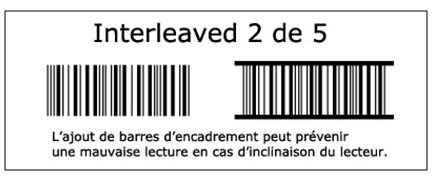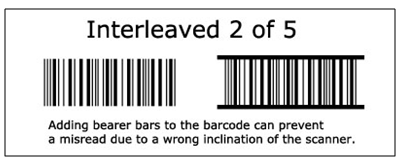Every barcode has its pros and cons. Before installing a data capture system, it’s important to consider the characteristics of various barcodes in order to make an enlightened decision. Depending on the circumstances, you may want to avoid a code that can be copied too easily or a code that can lead to scanning errors.
There are several types of barcodes that you can choose from to identify your merchandise or inventory. Moreover, IMS did an overview of the main barcodes in a previous newsletter. If some sectors must use a specific code, like the ISBN for the book industry, others are free to choose although there are trends depending on the application and the sector.
Code 39: less reliable
There’s no need to use a special software program or application to create a “Code 39” barcode. Just simply add the TrueType font to a word processing software like Word and type the characters of the code (be sure not to forget to include an asterisk (*) at the beginning and the end of the code).
Code 39 is subject to substitution. Just as the combination of several wide or narrow bars constitutes one character, a poorly printed or round bar could be misinterpreted, which could increase the risks of one character being substituted for another. All in all, this is a simple but unreliable form of symbology.
Interleaved 2 of 5: subject to scanning errors
First of all, and as opposed to several other barcodes, the Interleaved 2 of 5 barcode (also known as ITF) has a variable length (as long as it contains an even number of characters). Then, as it can only contain numerical data, the asterisk cannot be used at the beginning or the end to delineate the barcode. These two characteristics of the Interleaved 2 of 5 open the door to data capture errors. For example, if you scan a code that is the slightest bit long and your scanner is inclined or poorly oriented, the absence of a frame could result in a partial scan.
Despite their disadvantages, both codes remain popular, especially Code 39 which is offered free of charge on several websites. It’s up to you to follow the crowd or opt for codes offering higher reliability! Personally, I advise using Code 128. It’s flexible (variable length), much denser than Code 39 and its encoding makes it very reliable. Call us now to learn how to integrate this code to your applications!








